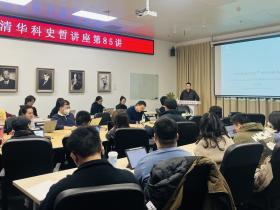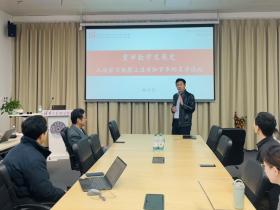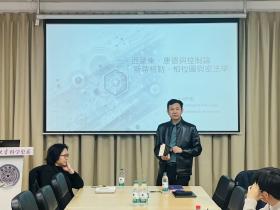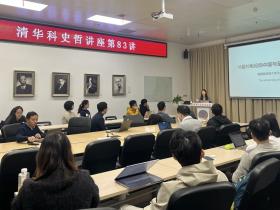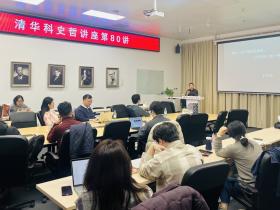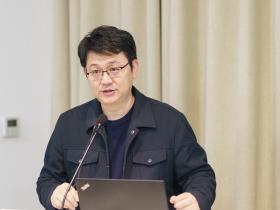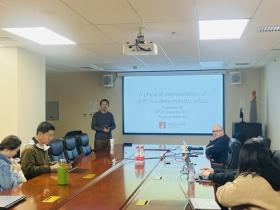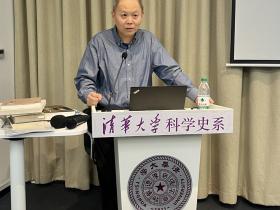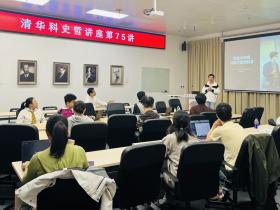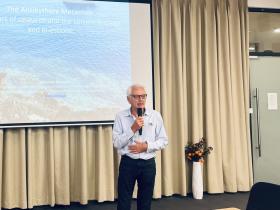On November 6, 2024, Tsinghua University’s Department of the History of Science hosted the 77th session of the THU History and Philosophy of Science Lecture Series in Room B206 of the Humanities Building. Chaired by Dr. Alberto Bardi, the lecture featured Dr. Arthur Harris—Lloyd-Dan David Research Fellow at the Needham Research Institute and Darwin College, University of Cambridge—who spoke on "Aristotle, Mechanica, and the Investigation of Nature."
Dr. Bardi first introduced the speaker: Dr. Harris holds a BA in Classics from Oxford and an MPhil/PhD in History and Philosophy of Science from Cambridge. He has completed his forthcoming first book, Aristotle and the Mechanica.
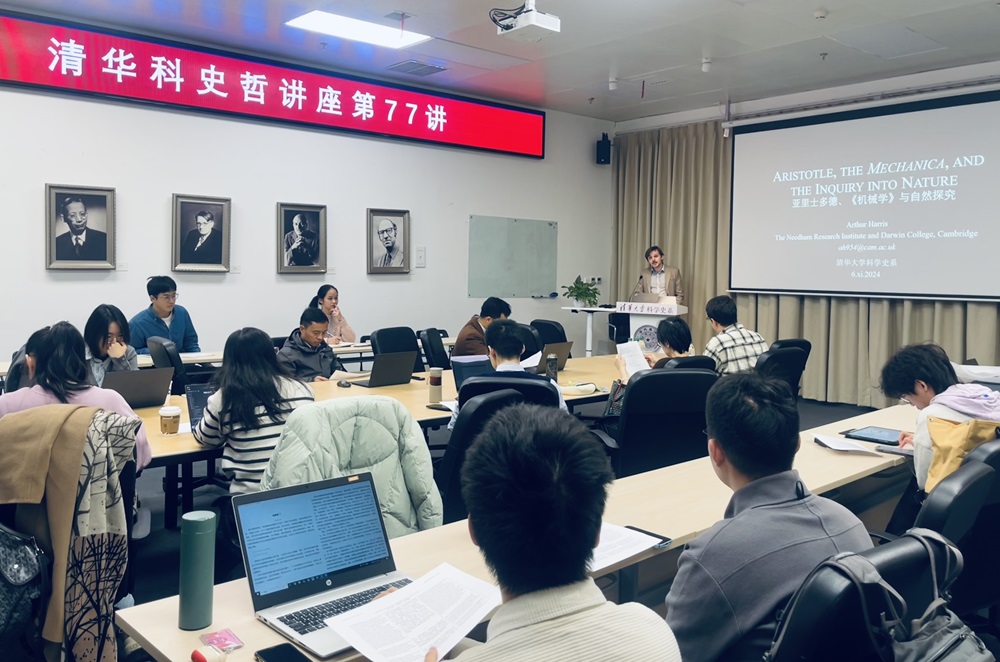
Dr. Harris began by outlining Aristotle’s fundamental concept of nature: natural objects possess an intrinsic principle of motion. Their movements follow specific causes and purposes, applied to animals, plants, and inanimate bodies. Motion is spatially finite but temporally infinite; celestial motion is eternal and circular. He then posed the core question: Where does mechanics fit within Aristotle’s cosmological system?
The standard narrative in contemporary scholarship holds that Aristotle based his mechanics on an untested assumption—that an object twice as heavy falls twice as fast—definitively refuted by Galileo in 1638. This narrative, Dr. Harris argued, has two flaws: first, Aristotle’s statement on mass-velocity proportionality is largely irrelevant to mechanics; second, it ignores the content of the Mechanica within the Aristotelian corpus. The lecture re-examined this narrative, demonstrating how the Mechanica attempts to provide a causal explanation for "mechanical advantage" to resolve a core problem in Aristotelian cosmology.
Current interpretations of the Mechanica follow two approaches:
- Pierre Duhem’s approach: Derives equilibrium principles using Aristotle’s "laws of motion."
- G. E. L. Owen’s approach: Asserts fundamental inconsistency between mechanics and Aristotelian motion principles, calling it "almost Newtonian."
Dr. Harris deemed both unsatisfactory and proceeded to analyze four key issues.
First, he listed three alleged contradictions between Aristotle’s theory of motion and that in the Mechanica:
- Instantaneous Motion: Aristotle’s response to Zeno’s "flying arrow" paradox states "nothing moves in an instant," yet the Mechanica describes rotational radii with motions "not proportional at any instant," implying instantaneous motion.
- Simple Circular Motion vs. Constrained Radial Rotation: Aristotle distinguishes simple motions (rectilinear, circular) from mixed motion. The Mechanica analyzes circular rotation as a mixture of two rectilinear motions—inconsistent with Aristotelian natural philosophy.
- Natural vs. Non-Natural Motion: The Mechanica treats tangential motion as "natural" and radial motion as "non-natural," whereas Aristotelian philosophy reserves "natural motion" for downward movement of heavy objects.
Dr. Harris argued these contradictions are unconvincing: the Mechanica does not propose a new theory of motion but extends Aristotle’s framework for investigating nature into the realm of technology.
He then highlighted the link between mechanics and Aristotelian cosmology. The Mechanica addresses why smaller forces move larger weights (mechanical advantage), closely tied to cosmology’s core problem of the unmoved mover. Aristotle held that cosmic motion requires an initial cause (the unmoved mover) obeying the principle that "the effect cannot exceed the cause." Mechanical devices like levers and pulleys appear to violate this principle.
Regarding explanations for mechanical advantage in mixed circular rotation, a contradiction exists between the natural philosophy account (longer radius endpoints experience less constraint) and geometric arguments. Previous scholars offered three explanations:
- Textual incoherence.
- Geometric arguments are foundational (being deductive).
- Natural philosophy explanations are foundational (geometric arguments provide informal support).
Dr. Harris analyzed two geometric arguments, concluding the natural philosophy constraint principle offers sufficient causal explanation, while the first geometric argument provides informal support and the second remains unclear.
Finally, Dr. Harris addressed why later Greek mechanics omitted the Mechanica’s rotation theory. Possible reasons include: the greater precision of Archimedean mechanics (introducing the center of gravity), and Hellenistic philosophers’ disinterest in maximizing mechanical advantage.
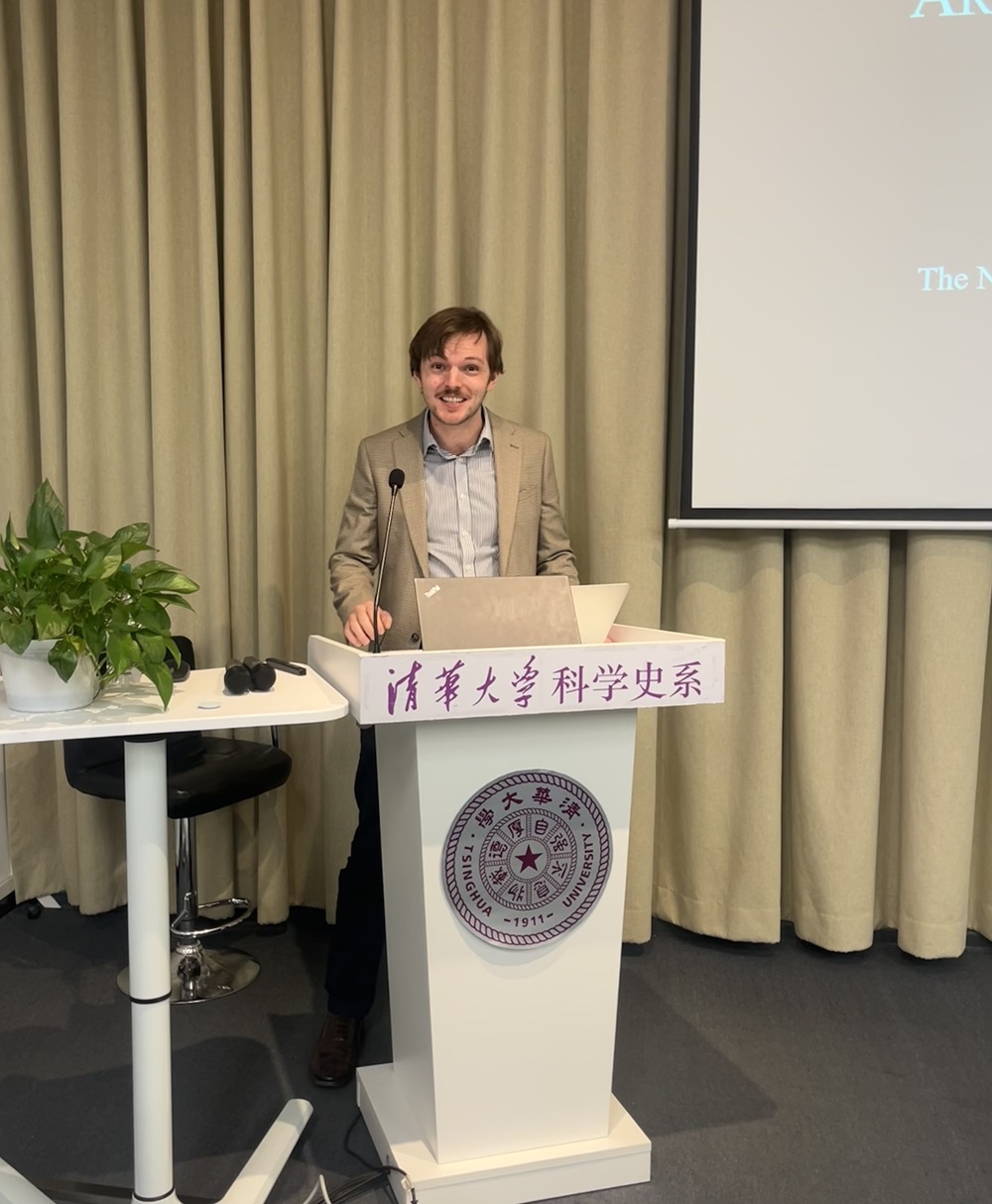
In conclusion, Dr. Harris argued that while Aristotle’s mechanical theory had limited historical influence, it appropriately provided causal explanations for mechanical advantage within his natural philosophy framework. The Mechanica was not merely an investigation of nature but extended natural philosophy into technology—specifically simple machines. Thus, he rejected the two traditional interpretive approaches, emphasizing that this open cosmological problem demanded causal explanation.
During Q&A, faculty and students discussed boundaries between artificial/natural objects, the unmoved mover, geometric proofs, argumentative angles, and textual details with Dr. Harris.
Documented by: Yu Danni
Reviewed by: Jiang Che


